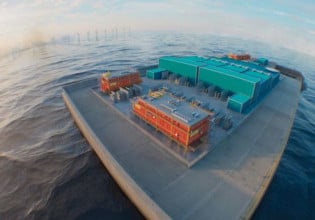Protonex Announces Commercial Fuel Cell Power System for Unmanned Applications
Protonex Technology Corp. announced the commercial availability of the UAV-H500 fuel cell power system for unmanned aerial and ground vehicles. The UAV-H500 is a commercial variant of the power system used by the U.S. Naval Research Laboratory to set a flight endurance record on its small, unmanned aerial vehicle (UAV), the Ion Tiger. The Ion Tiger flew for over 26 hours, setting an endurance record for fuel cell powered flight, driven by the Protonex power system.
According to the company, the electric propulsion for small UAV provides low cost of ownership and very quiet operation. Unfortunately, the energy density available from even advanced battery solutions limits flight durations and increases operational costs. The 26+ hour duration of the Ion Tiger flight represents a seven-fold improvement in endurance over available advanced batteries. The Protonex UAV power system employs a high performance, ultra-light proton exchange membrane fuel cell system, coupling advanced balance of plant components with stack technology that can achieve a power density of 1,000 watts per kilogram.
The UAV-H500 brings this advanced defense-proven capability to the commercial UAV market. Prior to the UAV-H500, extended endurance was only achievable with larger, more costly UAVs platforms. The UAV-H500 is an extremely simple and robust system, providing the operator with longer maintenance intervals and lower operational costs than comparable combustion engines. Critical missions can now be achieved using smaller, more cost-effective UAV platforms that incorporate the Protonex advanced power system.
"This system brings world leading fuel cell technology to commercial UAV manufactures in an off-the-shelf package," stated George Kiwada, Unmanned Systems Program Manager at Protonex. "Our military customers have consistently been excited by the endurance and low observability of our power systems. Commercially focused UAV integrators can employ these proven systems to lower their operational costs and benefit from long endurance, electric propulsion."






